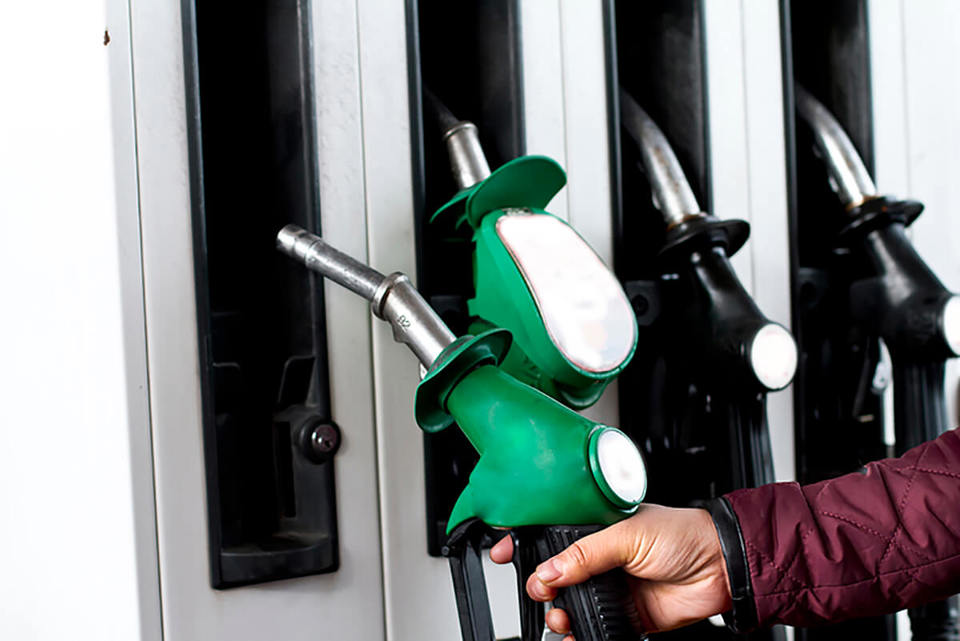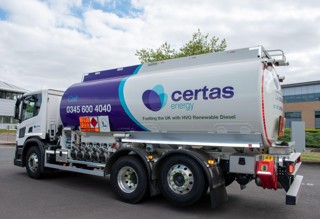After a brief rise, average UK petrol and diesel prices have started to fall again as oil supply concerns in Libya and the Middle East diminish, according to the latest AA Fuel Price Report.
However, the European Commission has indicated that it will promote fuel price regulation, having been wowed by Austria’s up to 3.6% cut in petrol prices and up to 2.5% reduction in diesel prices since introducing regulation in 2011.
UK petrol pump prices average 131.61p a litre this mid-July, down from 131.70p last week. However, a month ago, they averaged 130.47p.
Diesel forecourt prices have also fallen from 136.37p last week to set a mid-July average of 136.08p. A month ago, they were 135.70p.
The rise and fall of pump prices reflect oil’s quick increase to $115 a barrel in the third week of June, as Iraq started to disintegrate, and subsequent fall to less than $105 at the start of this week.
Despite knee-jerk predictions of a pump price surge, a stronger pound, less speculator activity in the commodity markets and yet another summer of lower-than-expected fuel demand have limited the increase to a summer blip.
With wholesale petrol back at 45.5p a litre last week, a level which saw pump prices bobble around the 130p-a-litre mark through April and May, this should iron out the summer price wrinkle if sustained.
UK average diesel pump prices, as reported last month, remain overblown. On paper, the wholesale price of diesel has been at or below the wholesale price of petrol since the beginning of July. Yet, diesel remains 4.5p more expensive at the pump – only slightly down from 5.25p in mid-June.
Part of that is due to the fuel supply and retail industry taking a 1p-a-litre hit on petrol, but loading the loss on diesel.
The European Commission, in this month’s ‘Study on the vehicle fuels market’ report, highlighted an €11 billion per year loss to European consumers because of the way they are treated by the road fuel industry.
Complaints include pricing, labelling at the pump, inadequate information about fuels, and poor regulatory enforcement.
One of the study’s key conclusions was the need to stimulate greater competition through better price comparison.
Setting out the policy implications, the European Commission listed:
Streamlining vehicle fuel price notification systems - The study highlights the approach taken by Austria, where all fuel retailers must notify their price changes with only one price increase per day permitted.
This increases price transparency with the study showing a price reduction of 1.5% to 2.5% for diesel fuels and of 3% to 3.6% for petrol since the pricing regulation was introduced in 2011.
The Commission plans to actively promote this best practice among Member States in the coming period, as it has been shown to bring significant benefits to the consumers.
Improve comparison websites - Consumers should be made more aware of the availability of comparison websites. Regulatory requirements for fuel retailers to inform the authorities of their prices help make comparison websites reliable and up-to-date.
The study recommends:
Updating price information more often
Giving consumers more information to help them select the correct fuel type, fuel quality and/or comparison test results
Explaining environmental issues more clearly
Extending availability and coverage
Making data sources clearer
Improving their accessibility and providing more information for people with disabilities
The AA’s president Edmund King said: “Despite the scaremongering on pump price rises earlier this summer, the increase was muted compared to what UK drivers have experienced since 2008.
“That doesn’t mean that commodity market speculation, Middle East oil crises, hurricanes in the Caribbean and other pressures have gone away for good but the fuel price climate has been settled for the moment by slack fuel demand, over-supply and a stronger pound.
“AA-Populus research found that 55% of UK families, rising to 66% among lower-income, reacted to up to 10% increases in the cost of domestic energy by being careful with the way they used their cars during the winter. This helped to push petrol consumption to its lowest on record in March, after the heavy rains and flooding had ended.
“Since then, official figures indicate some recovery in petrol consumption although, as lapsed gasoline demand figures in the US show, drivers here and abroad are still very sensitive.”
King added: “The European Commission is pushing for greater openness in the pricing of fuel and even regulation to make it happen.
“After five years of surging, rocket-and-feather and postcode lottery pump pricing, many UK drivers may actually welcome this bit of EU ‘nannying’ as a way to get a fair price at the pump."
The AA provides more than three million of its members with free fuel-price tracking mobile phone apps which allow them to root out competitive retailers.
And they and other drivers who go to France this summer can plot pump prices along their holiday route, using an official website – seeing exactly what can be achieved in stimulating transparency and competition.
Regionally, Northern Ireland sells the most expensive petrol, averaging 132.4p a litre, while drivers in Yorkshire and Humberside enjoy the lowest at 131.2p.
At 136.6p a litre, Scotland’s average price of diesel is the dearest in the UK, with Yorkshire and Humberside the cheapest at 135.7p.


















Login to comment
Comments
No comments have been made yet.